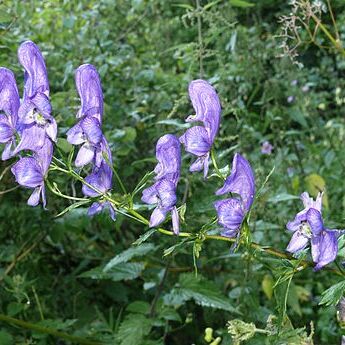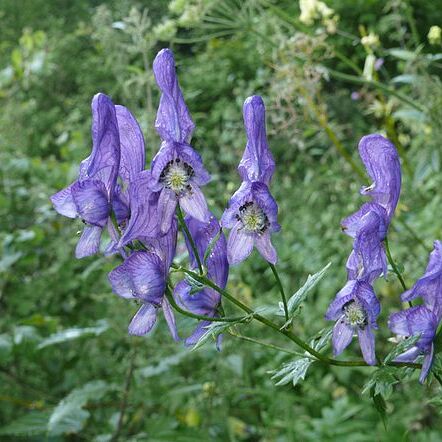Herbs perennial or pseudoannual, rarely annual, with taproots or 2 to several caudices. Stem erect or twining. Leaves simple or compound, cauline ones alternate, sometimes all basal, palmately divided, rarely undivided. Inflorescence usually racemose. Pedicel with 2 bracteoles. Flowers bisexual, zygomorphic. Sepals 5, petaloid, purple, blue, or yellow; lower sepals 2, narrowly lanceolate or oblong, small; lateral sepals 2, suborbicular; upper sepal falcate, navicular, galeate to cylindric. Petals 2, clawed; limb usually with lip and spur, secretory tissue usually at limb apex, rarely abaxial. Staminodes usually absent. Stamens numerous; anthers ellipsoid-globose. Carpels 3--5(--13); style short, persistent.
Fls irregular; calyx corolloid, with unequal sep, the upper one (called the helmet) the largest, strongly arched or hooded, its tip prolonged forward and downward into a short beak; upper 2 pet concealed under the helmet, clawed, nectariferous at the tip; lower 3 pet vestigial or wanting; stamens numerous; pistils 3–5, the fr follicular; poisonous perennial herbs with broad, palmately cleft lvs and showy, mostly blue or white fls in a terminal raceme or panicle. 50+, Eurasia and N. Amer.


